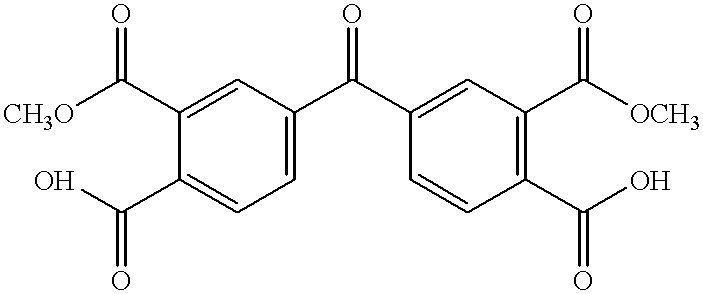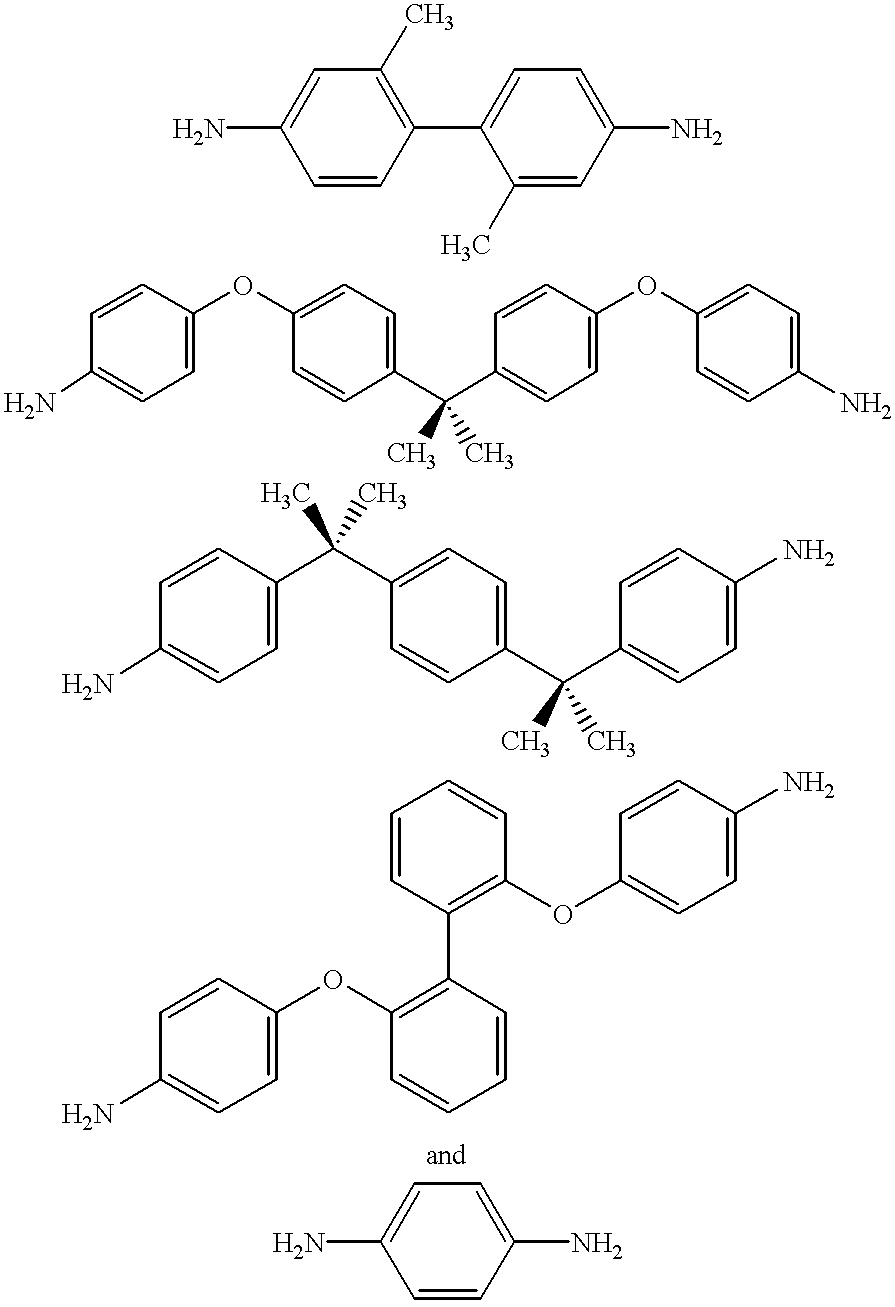Triamine-modified polymides having improved processability and low melt flow viscocity
a technology of triamine and polymides, which is applied in the field of additive cure polyimides containing nadic or 4phenylphthalic anhydride reactive ends, can solve the problems of not possessing the high temperature stability associated with the other two types of polyimides, and polyimides are extremely difficult to process, so as to improve the processability of polyimides and reduce the viscosity. the effect of the melt flow
- Summary
- Abstract
- Description
- Claims
- Application Information
AI Technical Summary
Benefits of technology
Problems solved by technology
Method used
Image
Examples
Embodiment Construction
As noted hereinabove, the present invention is directed toward the use of an aromatic triamine compound in conjunction with a diester diacid compound, i.e., an alkyl ester of a tetracarboxylic acid, an aromatic diamine compound, and a monoalkyl ester or anhydride derivative of 5-norbornene-2,3-dicarboxylic acid (nadic) or 4-phenylethynylphthalic anhydride (PEPA), to form a star-branched, addition-cured polyimide exhibiting an increase in glass transition temperature and thermo-oxidative stability (TOS) and a lower melt flow viscosity as compared to other "linear" PMR-type or addition-cured polyimides of comparable molecular weight. It will be appreciated that, for the purposes of this invention, the term "PMR-type polyimides" will generally refer to those "linear" polyimides prepared from a process using nadic ester end caps as discovered by NASA in the early 1970s. However, from time to time, the term "PMR-type polyimides may be used to refer to the polyimide of the present inventi...
PUM
| Property | Measurement | Unit |
|---|---|---|
| Substance count | aaaaa | aaaaa |
| Substance count | aaaaa | aaaaa |
| Mass | aaaaa | aaaaa |
Abstract
Description
Claims
Application Information
 Login to View More
Login to View More - R&D
- Intellectual Property
- Life Sciences
- Materials
- Tech Scout
- Unparalleled Data Quality
- Higher Quality Content
- 60% Fewer Hallucinations
Browse by: Latest US Patents, China's latest patents, Technical Efficacy Thesaurus, Application Domain, Technology Topic, Popular Technical Reports.
© 2025 PatSnap. All rights reserved.Legal|Privacy policy|Modern Slavery Act Transparency Statement|Sitemap|About US| Contact US: help@patsnap.com



